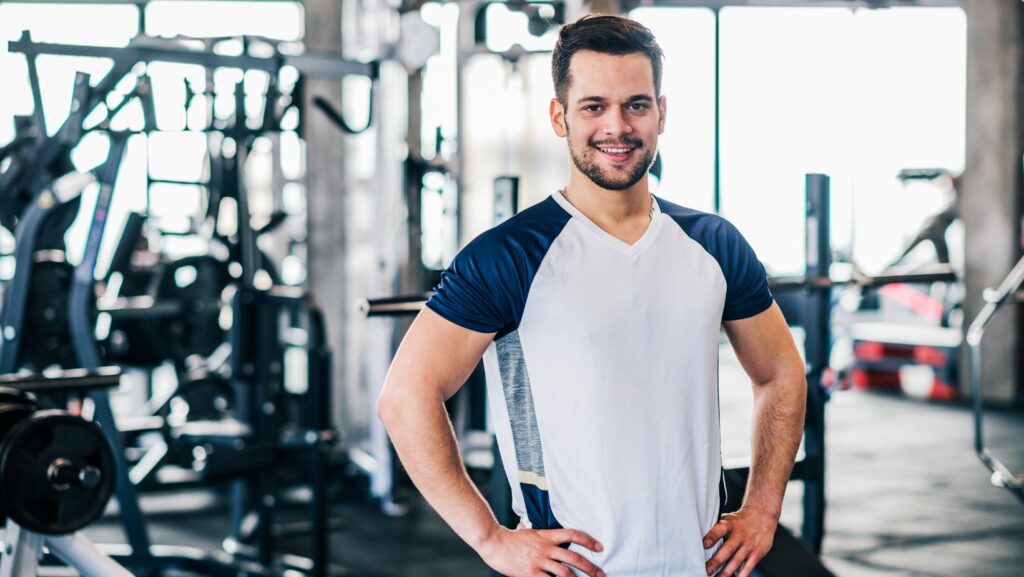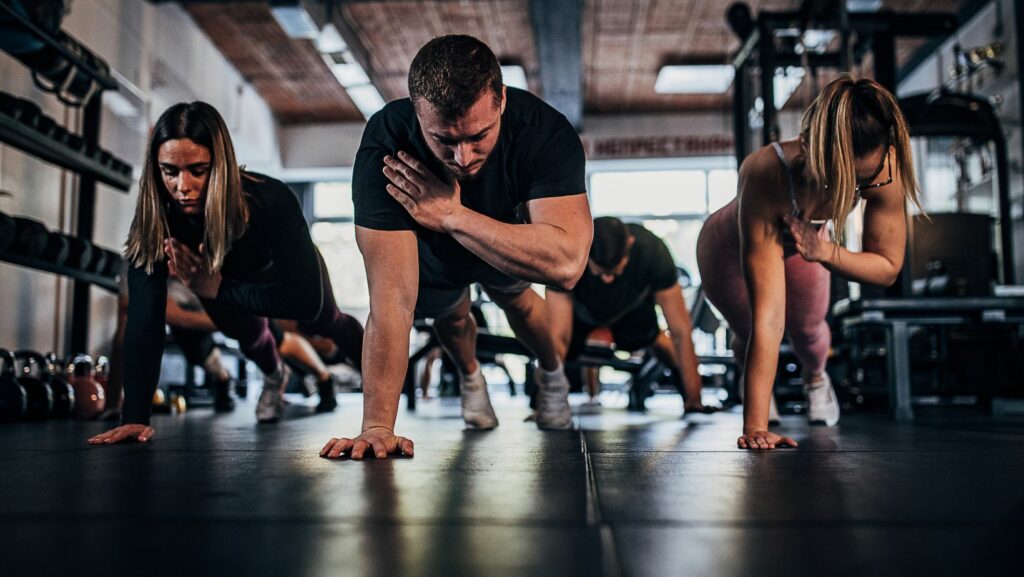5 Fitness Components
- Comprehensive Understanding: Fitness consists of five essential components: cardiovascular endurance, muscular strength, muscular endurance, flexibility, and body composition, each contributing uniquely to overall health and performance.
- Cardiovascular Endurance: Enhances the body’s ability to sustain prolonged physical activity, supporting heart health and boosting energy levels; exercises like running and cycling are effective in improving this component.

- Muscular Strength and Endurance: Building muscular strength improves athletic performance and daily functionality, while muscular endurance focuses on sustaining repeated contractions over time; both are crucial for a well-rounded fitness program.
- Flexibility Benefits: Flexibility enhances joint range of motion and reduces injury risks, playing a vital role in overall fitness; regular stretching, yoga, and Pilates can significantly improve flexibility.
- Body Composition Awareness: Understanding body composition is key for tailoring fitness and nutrition plans; it helps individuals monitor their health through the balance of fat, muscle, and other tissues.
- Holistic Approach to Fitness: Embracing all five fitness components leads to optimized training strategies, improved results, and a balanced lifestyle, supporting long-term health and performance goals.
Fitness isn’t just about hitting the gym or running a marathon; it encompasses a variety of components that contribute to overall health and performance. Understanding these five key fitness components can help individuals tailor their workouts and achieve their goals more effectively.
From cardiovascular endurance to flexibility, each component plays a vital role in enhancing physical capabilities and promoting a balanced lifestyle. Whether someone is a seasoned athlete or just starting their fitness journey, recognizing these elements can lead to better training strategies and improved results. Embracing a holistic approach to fitness is essential for anyone looking to elevate their well-being and performance.
Overview of the 5 Fitness Components
The five fitness components encompass essential physical qualities that contribute to overall health and performance. Understanding these components enables individuals to create comprehensive exercise programs tailored to their personal goals.
- Cardiovascular Endurance
Cardiovascular endurance refers to the body’s ability to sustain prolonged physical activity. This component relies on the efficiency of the heart, lungs, and circulatory system. Activities like running, swimming, or cycling enhance cardiovascular endurance, improving stamina and reducing fatigue during prolonged exercises.
- Muscular Strength
Muscular strength measures the maximum amount of force a muscle or group of muscles can exert. Lifting weights or performing resistance exercises strengthens muscles, leading to improved performance in various physical activities and daily tasks.
- Muscular Endurance
Muscular endurance involves the ability of a muscle or group of muscles to perform repeated contractions over time without fatigue. Activities such as circuit training or bodyweight exercises enhance this component, enabling individuals to sustain physical activity longer.
- Flexibility
Flexibility assesses the range of motion available at a joint or group of joints. Stretching exercises, yoga, or Pilates can improve flexibility, which benefits overall movement efficiency and reduces the risk of injuries during physical activities.
- Body Composition
Body composition refers to the proportion of fat, muscle, bone, and other tissues in the body. Maintaining a healthy body composition involves a combination of balanced nutrition and regular physical activity. Assessing body composition helps individuals understand their fitness levels and tailor their training programs effectively.
Cardiovascular Endurance
Cardiovascular endurance plays a critical role in overall fitness. It enables the body to sustain extended periods of physical activity, supporting health and stamina.
Importance of Cardiovascular Health
Cardiovascular health impacts various aspects of well-being. Improved cardiovascular endurance reduces the risk of heart disease, enhances lung capacity, and boosts metabolism. Enhanced endurance leads to better energy levels and aids in weight management. Regular cardiovascular exercise also promotes mental clarity and reduces stress. According to the American Heart Association, engaging in at least 150 minutes of moderate aerobic activity weekly significantly lowers health risks.
Exercises to Improve Cardiovascular Endurance
Numerous exercises effectively enhance cardiovascular endurance. They include:
- Running: Engaging in running, whether outdoors or on a treadmill, builds stamina and strengthens the heart.
- Cycling: Participating in cycling provides a low-impact option, improving leg strength and cardiovascular fitness simultaneously.
- Swimming: Utilizing swimming activates multiple muscle groups while providing a full-body workout, which enhances lung capacity and endurance.
- Jump Rope: Incorporating jump rope sessions offers an efficient way to elevate heart rate and improve coordination while burning calories.
- Circuit Training: Implementing circuit training combines strength and aerobic exercises, delivering a comprehensive workout that improves endurance.
Adopting a mix of these activities will cultivate and maintain cardiovascular endurance, ensuring sustained health benefits.
Muscular Strength
Muscular strength measures the maximum force exerted by muscles during physical activities. Building strength not only enhances performance in sports but also supports daily activities, fostering an independent lifestyle.
Benefits of Building Strength
- Improved Performance boosts athletic capabilities, allowing for better results in activities such as running, cycling, or playing sports.
- Injury Prevention strengthens muscles, tendons, and ligaments, reducing the risk of injuries during physical activities.
- Increased Metabolism elevates calorie burn even at rest, aiding in weight management and body composition improvements.
- Enhancement of Bone Density strengthens bones, decreasing the risk of osteoporosis and promoting greater skeletal health.
- Boosted Confidence improves self-esteem and mental well-being through physical achievement and progress in strength training.
- Weightlifting utilizes free weights or machines to improve muscle strength through exercises like squats, deadlifts, and bench presses.
- Bodyweight Exercises employ one’s body weight for resistance, with push-ups, pull-ups, and lunges as effective examples.
- Resistance Band Training offers a versatile option that can be adapted for various fitness levels, featuring exercises like rows and leg extensions.
- Functional Training includes movements that mimic everyday activities, enhancing overall strength and balance through exercises like kettlebell swings and medicine ball throws.
- Plyometric Exercises focus on explosive movements such as jump squats and box jumps, contributing to muscular power and strength.
Utilizing a variety of these exercises fosters a well-rounded strength training program and contributes to overall fitness.
Muscular Endurance
Muscular endurance is the capability of muscles to perform repeated contractions over an extended period without fatigue. This component plays a vital role in many athletic activities and daily tasks.
Difference Between Strength and Endurance
Strength and endurance represent distinct fitness capabilities. Strength pertains to the maximum force a muscle can exert in a single effort, often measured through heavy lifting. In contrast, endurance focuses on sustaining submaximal efforts over time, such as completing high-repetition exercises. While strength emphasizes weight and muscle power, endurance highlights stamina and resilience. Together, these aspects contribute to overall fitness but serve different functional purposes.
Strategies to Enhance Muscular Endurance
Several effective methods exist to improve muscular endurance:
- Circuit Training: Engaging in a series of exercises targeting various muscle groups with minimal rest improves endurance while fostering overall strength.
- High-Rep Weightlifting: Performing exercises with lighter weights and higher repetitions builds endurance effectively. Aim for 12 to 20 repetitions in sets.
- Bodyweight Exercises: Incorporating exercises like push-ups, squats, and lunges promotes muscular endurance without equipment. Focus on maintaining form throughout the repetitions.
- Cross-Training: Mixing different types of workouts, such as running, cycling, and swimming, challenges muscles in various ways, enhancing overall endurance.
- Active Recovery: Integrating rest periods with low-intensity activities like walking helps maintain blood flow and aids muscle recovery, crucial for endurance development.
Incorporating these strategies fosters greater muscular endurance and overall fitness improvements.
Flexibility
Flexibility assesses the range of motion at joints and plays a vital role in enhancing overall fitness. Improved flexibility promotes better performance in physical activities and helps prevent injuries.
Role of Flexibility in Overall Fitness
Flexibility contributes to various aspects of physical health. It enhances athletic performance by enabling greater movement efficiency and agility. Increased flexibility reduces muscle tension, improving posture and alignment during exercise. Better flexibility also limits the risk of injuries by allowing muscles and joints to move through their full range of motion. Regular flexibility training can facilitate recovery after intense workouts, allowing the body to heal quicker and function optimally.
Techniques to Improve Flexibility
Incorporating specific techniques can effectively improve flexibility. Key methods include:
- Static Stretching: Holding a stretch for a prolonged period, usually 15-60 seconds, helps elongate muscles.
- Dynamic Stretching: Performing controlled movements that take joints through their full range of motion, increasing blood flow and preparing muscles for action.
- Yoga: Engaging in various yoga poses promotes flexibility while enhancing strength and balance.
- Pilates: Focusing on core stability and controlled movements rises flexibility through targeted muscle engagement.
- Foam Rolling: Utilizing a foam roller to apply pressure on muscles releases tightness, promoting better flexibility.
Incorporating these techniques regularly can lead to improved flexibility and enhanced overall fitness.
Body Composition
Body composition refers to the ratio of fat, muscle, and other tissues in the body. Understanding body composition aids in developing tailored fitness and nutrition plans to achieve health and performance goals.
Understanding Body Composition
Body composition plays a vital role in overall health. It impacts metabolic rates, physical appearance, and athletic performance. Key components include:
- Lean Mass: Encompasses muscles, bones, and connective tissues. High lean mass indicates better fitness levels and metabolic health.
- Body Fat: Refers to essential and stored fat. While some body fat is necessary for bodily functions, excess fat poses health risks, such as heart disease and diabetes.
- Fat-Free Mass: Comprises all body tissues except fat. It includes water, muscles, organs, and bones, highlighting the importance of maintaining lean tissue for improved health.
Body composition can guide fitness regimens and dietary choices, helping individuals achieve optimal health.
Methods to Assess Body Composition
Various methods assess body composition accurately. Each technique offers unique insights and varying levels of accessibility and precision:
- Skinfold Measurements: Involves calipers to measure skinfold thickness at specific sites, estimating body fat percentage.
- Bioelectrical Impedance Analysis (BIA): Measures body composition through electrical currents passed through the body, providing information on body fat and lean mass.

- Dual-Energy X-ray Absorptiometry (DEXA): Utilizes X-ray technology to measure bone density, fat, and lean mass in a precise manner.
- Hydrostatic Weighing: Involves underwater weighing to determine body density. It calculates body fat based on water displacement.
- Circumference Measurements: Utilizes tape measurements at specific sites, such as the waist and hips, to estimate body fat distribution.
These methods help track changes in body composition, guiding individuals toward their fitness and health goals.
Balanced Lifestyle
Understanding the five components of fitness is essential for anyone looking to enhance their physical capabilities and achieve a balanced lifestyle. By focusing on cardiovascular endurance, muscular strength, muscular endurance, flexibility, and body composition, individuals can create a well-rounded fitness regimen. This holistic approach not only improves performance but also promotes overall well-being. Embracing these elements allows for personalized training strategies that cater to unique goals and needs. Ultimately, prioritizing these fitness components sets the foundation for a healthier and more active life.



